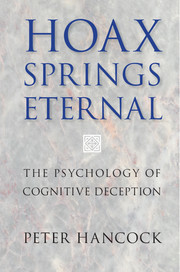Case 1 - The Cross of King Arthur
The Embodiment of King Arthur in the Isle of Avalon
Published online by Cambridge University Press: 05 January 2015
Summary
Introduction
There are few heroes better known than King Arthur. To the peoples of Celtic origin as well as good and true Englishmen everywhere, Arthur is a figure of immense symbolic significance. He is the monarch who promised to return, and in White’s borrowed but immortal phrase, he remains “the once and future King” [1]. As well as being a hero, Arthur is also a mystery, as there are, in reality, two Arthurs. One Arthur is the hero of myth and legend while the other is a very real and important historical figure of the early centuries of British life [2]. The immediate question arises as to which one we are dealing with here: Are we looking at the legend of Camelot with its Knights and Round Table, or is it the chieftain of early British tribes in and around the time of the final withdrawal of Roman control from Britain? Sometimes it is easy to tease apart these two versions of Arthur and sometimes it is almost impossible. The historic Arthur is indeed an intriguing and mysterious individual and certainly worthy of serious academic study in his own right. However, the Arthur of this story is evidently more the one of symbol and myth. It is this mythical dimension, as represented in the stories first told of him by Geoffrey of Monmouth in 1130, that raises him from the rank and file of early British rulers to the status of immortal, national, and indeed international hero [3]. It is somewhat strange then to begin this story of the Arthurian myth with a very clear focus on actual historical events. However, this is what I have done.
- Type
- Chapter
- Information
- Hoax Springs EternalThe Psychology of Cognitive Deception, pp. 13 - 36Publisher: Cambridge University PressPrint publication year: 2015

